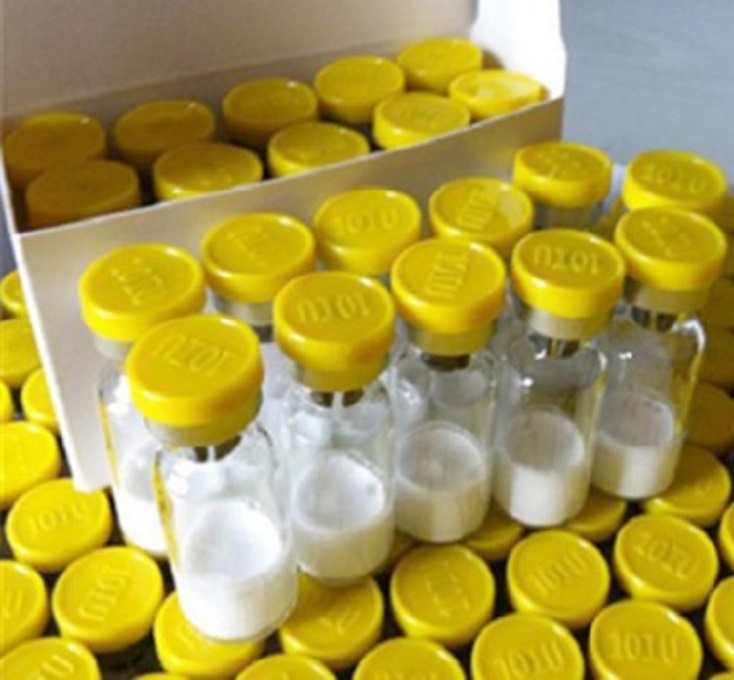BPC-157 refers to the peptide known as Body Protection Compound-157. BPC-157, also
known as pentadecapeptide, is classified as a compound that studies suggest may protect cells.
The composition of this entity consists of a specific arrangement of 15 amino acids, which
does not occur in nature.
The compound is synthesized through artificial means within laboratory settings, utilizing the
partial sequence of the body-protecting compounds isolated from gastric juices. Therefore, it
is considered a derivative of the peptide present in the gastric juices.
What is the Mechanism of Action of BPC-157 Peptide?
Research suggests the potential effects of BPC-157 may be manifested through various
mechanisms of action. Angiogenesis, the process of new blood vessel formation, is a
prominent mechanism through which BPC-157 has been theorized to exert its effects. [ii]
This process is considered to be achieved by activating a protein known as "vascular
endothelial growth factor," which triggers the initiation of angiogenesis and the formation of
new blood vessels. The abovementioned phenomenon may lead to the formation of a robust
vascular network, possibly endowing BPC-157 with its alleged regenerative attributes.
Findings imply that an additional mechanism by which BPC-157 may operate involves the
inhibition of 4-hydroxynonenal, a growth-inhibiting factor that negatively modulates growth.
Investigations purport that this mechanism may enable the peptide to facilitate efficient
wound healing, particularly around tendons.
Additionally, researchers speculate it may have the potential to stimulate the proliferation of
tendon cells, leading to an increased expression of receptors that can bind with growth
signaling molecules. This endeavor aims to expedite the mechanisms involved in the
progression of development and the restoration of biological structures.
Scientists hypothesize that BPC-157 may possibly enhance fibroblast proliferation and
migration. Fibroblasts are integral in collagen synthesis, a crucial and plentiful structural
protein in the body.
BPC-157 has been scientifically speculated to affect the functionality of neurotransmitters
present in the brain. The activity of BPC-157 has been suggested to influence
neurotransmitters, including serotonin, dopamine, and GABA. This influence has been
associated with a potential reduction in the likelihood of experiencing symptoms related to
depression, stress, and anxiety.
Studies suggest this peptide is also recognized for its alleged potential to produce nitric oxide
(NO), which may subsequently stimulate the dilation of endothelial cells. Thus, research suggests there may be a decrease in the systemic blood pressure within the organism. It may also possibly aid in managing hyperkalemia, which is elevated potassium levels.
BPC-157 Peptide Potential
BPC-157 suggests encouraging outcomes in the mitigation of gastric ulcers. [v] The alleged
efficacy of this pentadecapeptide has also been suggested in rats as an agent for
gastrointestinal fistulas, which are structural abnormalities occurring within the digestive
tract.
Several studies have provided some data to suggest that BPC-157 may exhibit efficacy in
combating inflammatory bowel diseases (IBD) and might mitigate inflammation at wound
sites.
The alleged efficacy of BPC-157 in encouraging Achilles tendon and muscle healing has been
speculated through rigorous research experiments conducted on rat models. These
experiments have suggested that BPC-157 may exert its effects by promoting angiogenesis
the formation of new blood vessels.
Findings imply that BPC-17 may influence the growth rates of bones, tendons, and joints
through its potential to enhance the expression of growth hormone receptors.
Investigations purport that this compound may possibly accelerate the wound-healing process
of cutaneous tissue impacted by thermal injuries. In addition, researchers speculate the dermal
tissue exhibiting multiple lacerations may exhibit rapid regeneration when presented with
BPC-157.
Scientists hypothesize that BPC-157 may influence the central nervous system and cognitive
processes, facilitating neurogenesis and the restoration of neuronal cells. This may ensure the
potential reduction of cognitive decline over time.
Remarkably, experimental studies conducted on rodent models subjected to nonsteroidal anti-
inflammatory drug (NSAID) poisoning suggested a notable reversal of toxic manifestations
after being given BPC-157.
BPC-157 vs TB500
One of the fundamental distinctions between these two compounds lies in the frequency of
their presentation.
Studies suggest that compared to TB 500, BPC-157 may exhibit a greater propensity for
exerting a localized influence rather than a systemic effect. Additionally, research suggests
the latter may exhibit superior potential to TB 500.
Findings imply that TB 500 may play a potential role in muscle injury recovery, whereas
BPC-157 may possibly mitigate inflammation.
BPC-157 for sale is available at Core Peptides. Please note that these compounds have not
been approved for human consumption; therefore, any bodily introduction is prohibited. Buy
research compounds only if you are a licensed professional or a certified individual.
Post time: Nov-15-2023









